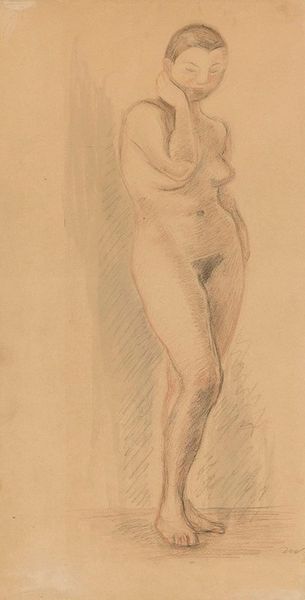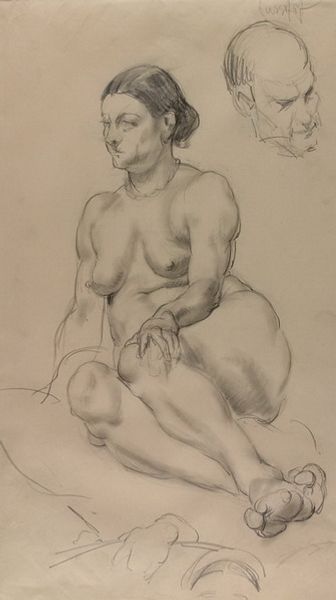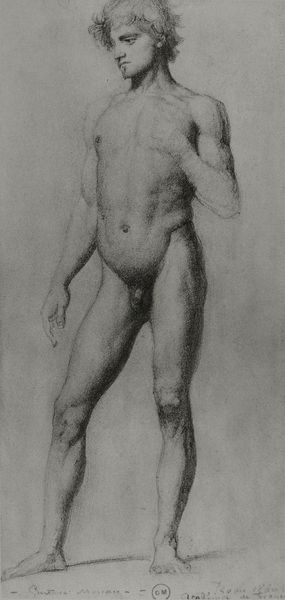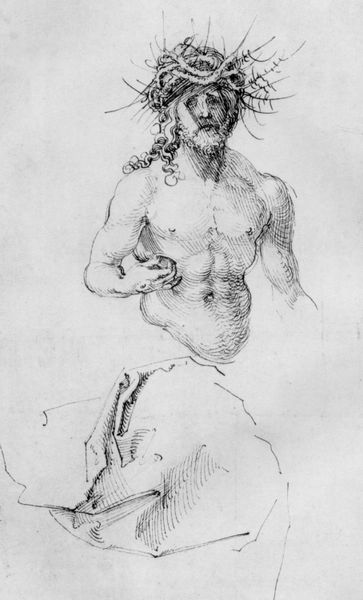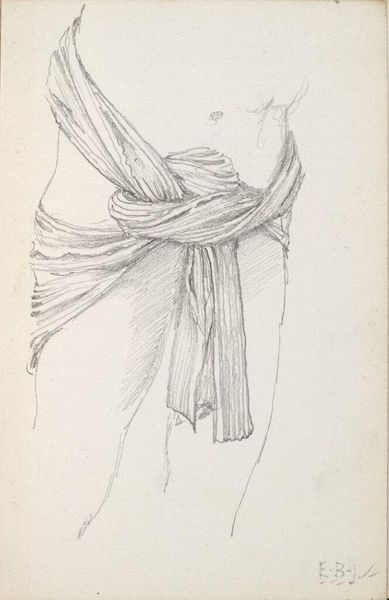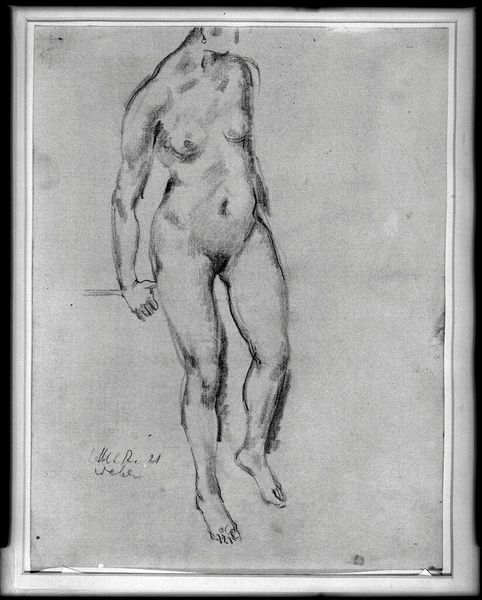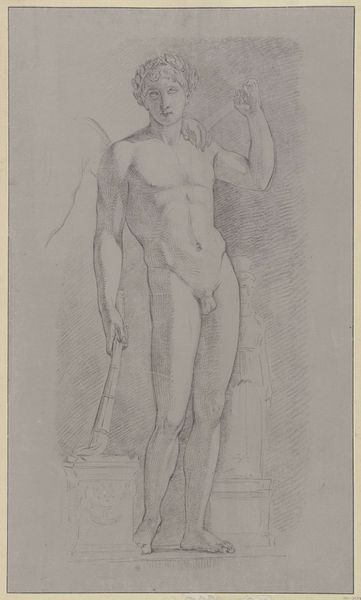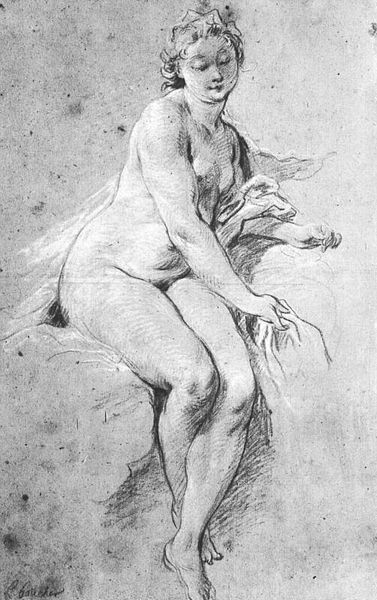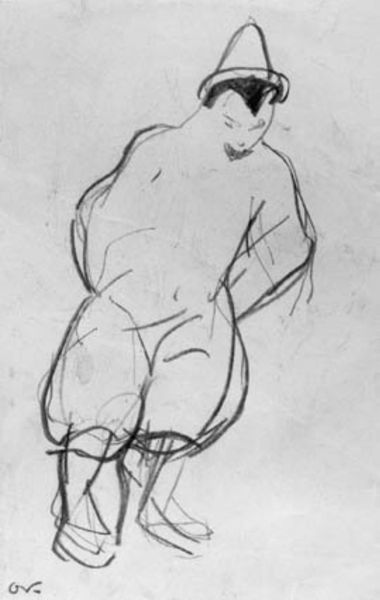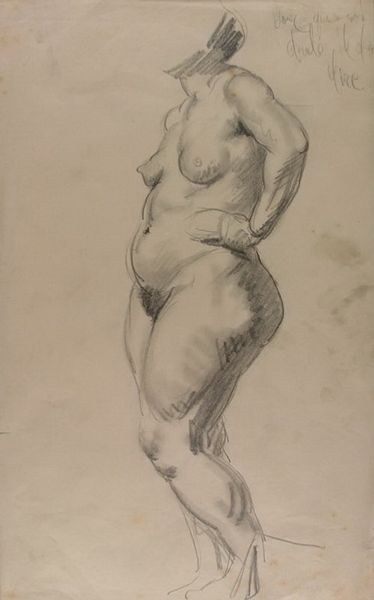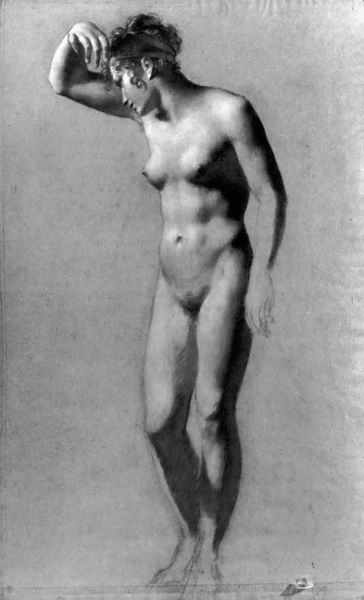
drawing, pencil
#
portrait
#
drawing
#
baroque
#
figuration
#
pencil drawing
#
pencil
#
portrait drawing
#
nude
Dimensions: 257 x 135 cm
Copyright: Public domain
Curator: Well, hello there! Look at this study by Gabriel Metsu from 1664. It's called "Woman Figure," rendered delicately in pencil. There’s something inherently intimate about drawings, don’t you think? What jumps out at you? Editor: Intimate, yes, but also a bit unsettling. There's a vulnerability to the woman’s pose, with the partially draped cloth slipping from her shoulders. It feels charged, loaded with the male gaze despite, or perhaps because of, its seemingly casual nature. Curator: Ah, the male gaze, always lurking in the shadows, isn’t it? But consider the time, 1664. It was part of a practice, a way to understand the form. Her gaze isn't directly at us either, and she even holds what appears to be a twig of olive branch – or is that simply me finding poetry where there's merely... a twig? Editor: That twig might be the most revolutionary part! You know, in terms of how these drawings function within systems of power – think about who was commissioning, viewing, and creating these images of the female body. Was this intended as just a 'study' of form or also, subtly, as an object of desire? Those symbolic flourishes never happen by accident. Curator: A fair point, considering Metsu was often depicting scenes of daily life and societal hierarchies. Perhaps the ‘accidental’ is merely a skillfully constructed illusion? Still, there’s an appealing simplicity to the pencil work. Editor: I find myself looking at the treatment of her flesh, those areas around the neck and chest… How much agency does she truly have here? The era, the artist's social standing... they are inseparable from our viewing. Curator: Context truly shapes our perceptions! For me, however, seeing her is also imagining the rustle of fabrics, the specific way the light was falling that day. Isn't that equally as valid a reading? Editor: Valid, yes. But incomplete if it disregards the historical frameworks that continue to shape the image and its reception. Ultimately, acknowledging both realities opens new avenues of seeing and of understanding. Curator: Well said, my friend. Perhaps beauty truly does lie in the eye of the intersectional beholder. Editor: Indeed. It calls upon us to question and look deeper than simple lines, wouldn’t you say?
Comments
No comments
Be the first to comment and join the conversation on the ultimate creative platform.
